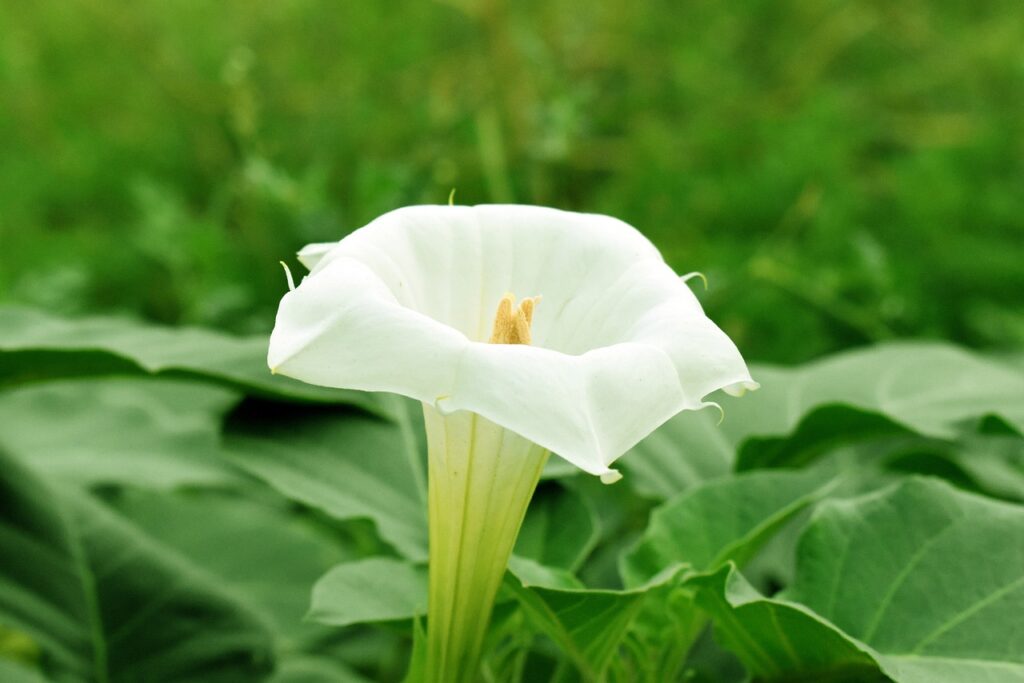Angel Trumpet plants, known scientifically as Brugmansia, are cherished for their stunning, trumpet-shaped flowers and intoxicating fragrance. These tropical beauties can transform any garden into a lush paradise. However, they require specific care to thrive. Here’s a comprehensive guide on how to care for your Angel Trumpet plants.
Planting
Location: Choose a spot with plenty of sunlight. Angel Trumpets thrive in full sun but can tolerate partial shade.
Ensure the location is sheltered from strong winds, as their large flowers and leaves can be damaged easily.
Soil: These plants prefer well-drained, fertile soil with a slightly acidic to neutral pH (6.0-7.0). If your soil is heavy clay, consider amending it with compost or using raised beds to improve drainage.
Planting Time: The best time to plant Angel Trumpets is in the spring after the last frost. This gives the plant a full growing season to establish itself.
Watering
Angel Trumpets need consistent moisture but dislike waterlogged soil. Water them thoroughly once or twice a week, allowing the soil to dry slightly between waterings. During hot, dry periods, they may require more frequent watering. Mulching around the base can help retain soil moisture and regulate temperature.
Fertilizing
These heavy feeders benefit from regular fertilization. Use a balanced, water-soluble fertilizer (e.g., 20-20-20) every two weeks during the growing season. You can also use slow-release granular fertilizer at the beginning of the season. High-phosphorus fertilizers (the middle number) can help promote blooming.
Pruning
Pruning is essential for maintaining the shape and health of your Angel Trumpet. Prune in late winter or early spring before new growth begins. Remove any dead or damaged wood, and cut back overly long or straggly branches to encourage bushier growth. Always use clean, sharp pruning shears to avoid disease transmission.
Pest and Disease Management
Pests: Common pests include aphids, spider mites, and whiteflies. Inspect your plants regularly and treat infestations promptly with insecticidal soap or neem oil.
Diseases: Angel Trumpets can be susceptible to fungal diseases, especially in humid conditions. Ensure good air circulation around the plant and avoid overhead watering. If fungal issues arise, treat with a fungicide according to the manufacturer’s instructions.
Winter Care
In colder climates, Angel Trumpets need protection from frost. If grown in pots, bring them indoors before the first frost. Place them in a cool, bright location and reduce watering. For garden plants, consider mulching heavily around the base or covering them with a frost cloth during cold spells.
Propagation
Angel Trumpets can be propagated from seeds or cuttings. Cuttings are the most common method:
Take 6-8 inch cuttings from semi-hardwood sections of the plant in late spring or early summer.
Remove the lower leaves and dip the cut end in rooting hormone.
Plant the cuttings in a well-draining potting mix and keep them moist.
Place the cuttings in a warm, bright location out of direct sunlight until roots develop, usually in 4-6 weeks.
Safety Note
All parts of the Angel Trumpet plant are toxic if ingested, so keep them away from children and pets. Wear gloves when handling the plant to avoid skin irritation.
With proper care, Angel Trumpet plants can be a spectacular addition to your garden, providing stunning blooms and a delightful fragrance. By following these guidelines, you can enjoy the beauty and elegance of Angel Trumpets while ensuring their health and vitality.
Container Growing
If you have limited space or live in a region with cold winters, growing Angel Trumpets in containers is an excellent option. Here are some tips for successful container growing:
Container Size: Choose a large pot, at least 16-20 inches in diameter, to accommodate the plant’s root system and provide stability. Ensure the container has drainage holes to prevent waterlogging.
Potting Mix: Use a high-quality potting mix that retains moisture but drains well. A mix formulated for tropical or flowering plants is ideal.
Watering and Fertilizing: Container-grown plants may dry out faster than those in the ground. Check the soil moisture regularly and water when the top inch feels dry. Fertilize every two weeks with a balanced, water-soluble fertilizer during the growing season.
Mobility: Place the container on a wheeled plant stand to make it easier to move the plant indoors or to a sheltered location during adverse weather conditions.
Flowering and Fragrance
One of the most rewarding aspects of growing Angel Trumpets is their spectacular flowers. Here’s what to expect and how to enhance blooming:
Blooming Period: Angel Trumpets typically bloom from late spring to fall. The flowers open in the evening and emit a strong, sweet fragrance, making them ideal for evening enjoyment.
Enhancing Blooms: To encourage more flowers, deadhead spent blooms regularly. Ensure the plant receives adequate sunlight and nutrients, and avoid over-pruning, as flowers develop on new growth.
Landscape Uses
Angel Trumpets can be used in various landscape settings to create a dramatic effect:
Specimen Plant: Plant a single Angel Trumpet as a focal point in the garden to showcase its large, pendulous flowers.
Hedges and Screens: Use multiple plants to create a fragrant hedge or privacy screen. Space them 3-5 feet apart for a dense planting.
Patio or Entryway Plants: Grow Angel Trumpets in large containers near patios, decks, or entryways where their fragrance can be enjoyed up close.
Common Problems and Solutions
While generally hardy, Angel Trumpets may encounter some common issues:
Yellowing Leaves: This can indicate overwatering, nutrient deficiency, or pest problems. Ensure proper watering practices, fertilize regularly, and inspect for pests.
Wilting: Wilting can result from underwatering, root rot, or extreme heat. Check soil moisture levels, improve drainage, and provide shade during the hottest part of the day if necessary.
No Blooms: Lack of flowers can be due to insufficient sunlight, inadequate fertilization, or improper pruning. Ensure the plant gets at least 6 hours of sunlight daily, fertilize regularly, and prune correctly.
Angel Trumpets are magnificent additions to any garden, offering lush foliage, stunning flowers, and a captivating fragrance. With the right care and attention, these plants can thrive and become the highlight of your garden space. Whether grown in the ground or containers, following the guidelines in this care guide will help you enjoy the beauty and elegance of Angel Trumpets for many years to come.






